Alekseyev KM “Caspian Monster”
(I finally finished this one a few months ago. It was one of those projects that you are inspired to start, then get distracted by something else, but eventually come back to.)
The Alekseyev ekranoplans were designed to fly in ground effect where the drag was much less, but were very limited as to where they could go at such extremely low altitudes. The mammoth KM was the biggest in the series and still holds the record for longest heavier-than-air craft to fly (319 feet). It was powered by eight booster turbojets, which blew air over and under the "wings", and two tail-mounted cruise engines. Optimal altitude was 13 - 46 feet and cruising speed was 250 - 280 mph. The sole KM flew on the Caspian Sea from 1967 until 1982, when it crashed and sank without loss of life. The wreckage was never recovered.
This is the Anigrand resin kit in 1/144 scale. The kit had some fit issues, with quite a few gaps needing attention. The control surface hinge lines were a little soft, so I separated the flaps and rudder and repositioned them deflected downward after cleaning them up. Because they didn't fit well nor look like KM photos, I rebuilt the tail engine intake spray deflectors. The aft fuselage strakes were also replaced with sheet plastic, which made smoothing the large seam between front and aft fuselage sections much easier.
I added some tiny 1/144 Preiser pilot figures to the cockpit but they're very difficult to see.
The panel lines seemed too deep and wide for this scale, so they were filled in and skin panels highlighted with slightly different shades of grey paint. The KM's wings and tail got pretty dirty from engine exhaust, so I tried to replicate this with my airbrush and pastels. Stripes were hand painted, while the tail numbers and doors are decals. Pitot boom and antennae came from the spares box or plastic stock.
My hat's off to Anigrand for producing kits of some very unique subjects!
If you build any of the available Ekranoplan kits (Anigrand KM, Anigrand Lun, or Revell Orlyonok), an excellent reference source is Soviet and Russian Ekranoplans by Komissarov and Gordon (Midland Publishing).
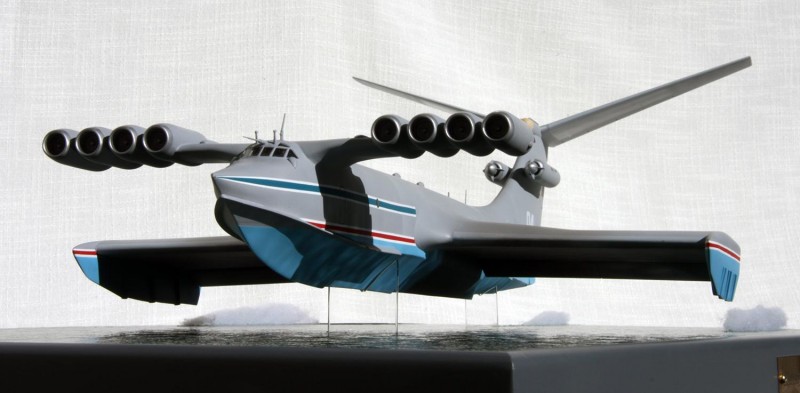
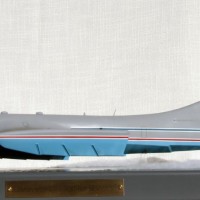
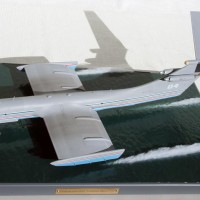
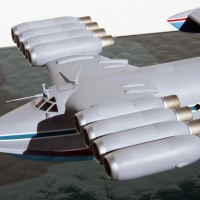
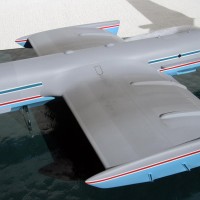
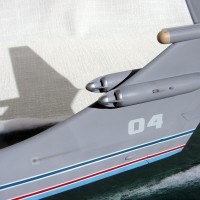
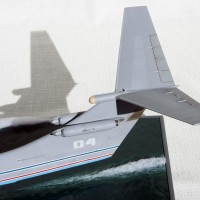
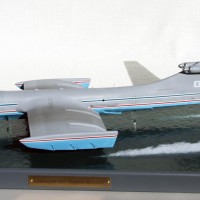
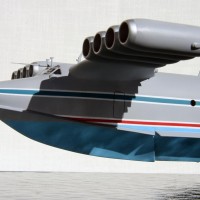
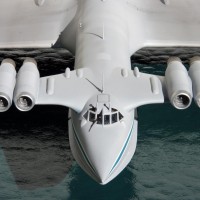
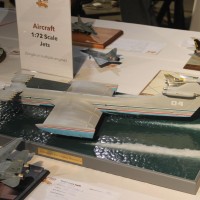
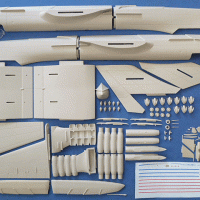
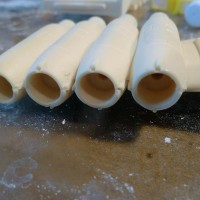
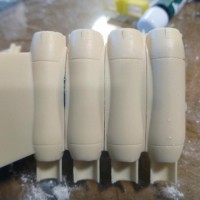
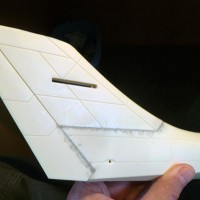
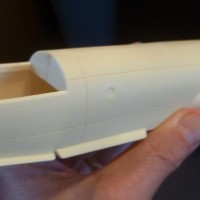
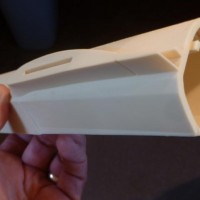
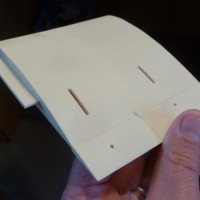
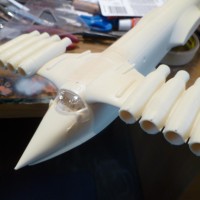
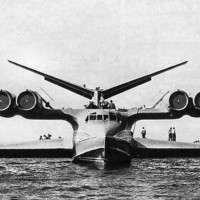
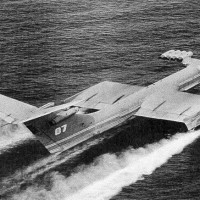
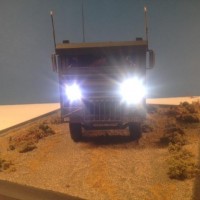
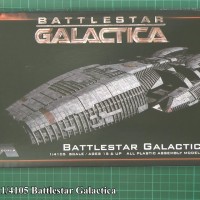
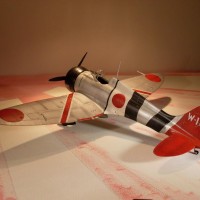
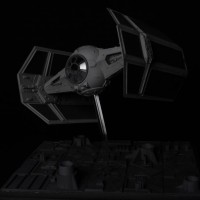
"...and still holds the record for longest heavier-than-air craft to fly..." ?
I always thought the Spruce Goose held that record - chalk it up to "ya learn sumthin' new every day", I guess. An excellent looking build, my friend. Very nice work.
Hi Jeff
Thats a very impressive model of a very impressive and interesting machine indeed.
So in fact those 8 "turbojets" only provide compressed air to lift the machine while the propulsion is procided only by the two jet engines on the tail?
Anyway congatulations for your build and for this very intriguent machine...
I'm guessing the 8 front engines helped get the thing off the water during the takeoff run and once airborne it had a lot less drag. The front engine exhaust could be deflected from downward to aft at various angles - this from the Midland book.
Wow what a system !
It must have required a lot of engineering and drawings ...
Thank you, Craig.
(the KM was longer but the Spruce Goose was wider in span. From what I could learn the length quoted included some tail antennae and a nose boom that it had at one time)
Nice model of a very interesting craft!
Thanks, Jeffrey.
Alekseyev definitely thought outside the box!
Those really are unusual. I can't imagine trying to "turn" that thing...
Nice model of a very interesting subject!
Right?! No steep banks with that one!
Thanks.
Fist time I,ve seen a finished model of one of those big and crazy airplanes.
Great job! Hat off
Thanks, Ulf!
WOW! Great work!
Sincerely, Vlad.
Thanks, Vlad.
Now that's different, great job.
Thanks, Robert. I appreciate that.
You did a superb job on that. Anigrand kits are terrible so I know the amount of work that went into it.
Thank you, George!
like this one. esp. the water effects, great!
My wife donated some pillow stuffing for the wake. Worked pretty well. Thanks!
Wonderful Sea Monster Jeff!
Thanks, David.
Monster it is!
Very nice work on the water texture! Multiple waves in the swells plus the wake. The model is very good, but I can't stop looking at that base!
I wish I could say I spent hours on texturing the water, but actually it was a piece of acrylic with the texture already there. It was nice to find something ready made - just needed a little paint.
Thanks for your comments, Josh!
When I first saw this I assumed it was a "what-if", but, no, it's for real! It's magnificent, thanks for showing it to us, Jeff.
Thank you, George.
I've seen a documentary about these before. It's hard to believe that it actually existed!
Really well executed model as well!
Yeah, why I wanted to model it. Very unusual.
Thanks, Richard.